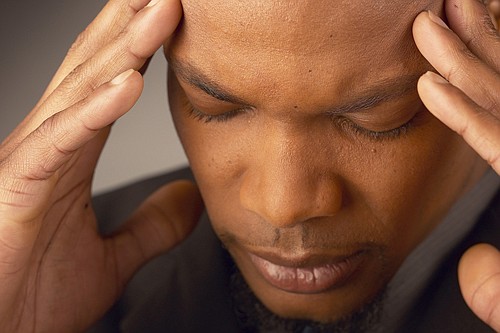As COVID-19 spreads across the nation levels of anxiety and stress are skyrocketing. People everywhere are experiencing heightened levels of anxiety and stress, especially black and brown people in America. One of the factors contributing to the high levels of stress and anxiety are black and brown people who are more likely to be a part of the new COVID-19 essential workforce. Essential workers must report to work daily. People in these positions often calculate the risk verses the benefit. A new framework for understanding perceived risk and risk prioritization— the Perceived Risk Hierarchy Theory (PRHT) helps to connect the dots.
The Perceived Risk Hierarchy Theory (PRHT) was developed to understand risk and risk prioritization among marginalized populations. PRHT posits that perceptions of risk severity are attenuated by what people perceive as more imminent in their lives (high-to-low risk ranking order; Edwards et al., 2017). PRHT postulates that people calculate their perceived risk based on how proximate and urgent the threats are in their lives as well as the impact assessment of the identified risk. This framework is critical for essential workers during the COVID-19 pandemic as they risk their lives and the health of their families to perform a job. Daily, essential workers choose between making a living, their health, and life. As a result, their stress and anxiety levels are skyrocketing.
“Essential workers” now refers not only to first responders, but also to grocery store employees, fast food workers, personal care aides, sanitarians, transit drivers, nursing home assistants, and several others still going to work during the crisis. Several of these workers, many of whom reside in hyper-segregated communities, live paycheck-to-paycheck and cannot afford to miss any days of work. Furthermore, many work multiple jobs just to make ends meet and survive. Essential workers thus face an increased risk of both being exposed to COVID-19 and contracting the disease due to their exhaustion and often, compromised immune systems due to stress.
As news emerged that COVID-19 was infecting essential workers, especially those who could not maintain social distancing, many feared becoming infected and possibly transmitting the virus to their loved ones at home. Immediately, workers became concerned about their jobs and their finances. Their anxiety levels continuously increase as they worry about the consequences of not reporting to work. Several essential workers are also afraid of having to take public transportation to and from work, as using public transportation has helped spread COVID-19, especially in cities with high urban population density. Density is a key factor in determining area vulnerability to the virus (Florida, 2020).
Essential workers are on the front lines of this public health crisis. They know the dangers and associated-risk of being hyper-exposed to COVID-19 via underlying health risks, over-crowded housing, and limited access to healthcare and COVID-19 testing. However, their financial insecurity requires them to prioritize between the risk of being exposed to COVID-19 and the risk of unemployment. For essential workers, leaving home is not a choice. Lacking the necessary, yet seldom
supplied by
employers, personal protective equipment works to further increase their anxiety. Combining these pressures along with long hours, little sleep, and sometimes having to self-quarantine within their own home to protect their family members, COVID-19 has created a crisis on top of a crisis (Catchings, 2020) and ultimately, the crisis’ interconnect.
Daily exposure to various stressors that can cause feelings of anger, fear, doubt, loneliness, and hopelessness have been exasperated by COVID-19. The accumulation of these feelings may not only create feelings of anxiety but could also cause panic attacks. In these uncertain times, some people have even mistaken anxiety symptoms as symptoms of COVID-19. Much of this is due to the stress associated with the fear of acquiring/dying from the virus and the fear of losing social and financial stability. This emotional trauma, which is in direct response to the life-altering consequences of this pandemic, often manifests in physical symptoms.
As COVID-19 continues to spread, many marginalized people already struggling with health and finances are bearing the brunt of the virus. In the U.S., health and wealth are intimately linked. Therefore, hyper-segregated cities and subpar neighborhoods rooted in the historical legacy of redlining have been hit the hardest. These communities have
experienced increased levels of stress/anxiety due to limited access to testing, denied hospital treatment, and a fear of acquiring COVID-19 and spreading the virus to others— especially vulnerable family members.
COVID-19 presents a clear and present danger for black and brown communities in the United States. Although the virus presents as an equal opportunity crisis, the impact and burden are unequally distributed. Not only is the stress regarding safety growing, but communities are concerned with their mental health as they prioritize navigating the virus for the benefit of their livelihood over the risk to their health and lives. COVID-19 has exposed the socioeconomic contributions that institutional practices and government policies have made to the disparate health outcomes experienced by marginalized communities in the U.S. The PRHT suggests that marginalized communities live every day on high alert for perceived threats and are in a constant state of mobilizing for the next assault. Although the United States of Anxiety may be an unfamiliar place for some, black and brown people know it as the place they live, work, play, and pray.
References:
—Catchings, C. The Psychological
Impact to Essential Workers During COVID-19. Retrieve on May 17, 2020 from https://www.talkspace.com/blog/ coronavirus-essential-workers-mental-health-impact/.
—Edwards, L., Brown, L., Lindong, I., et al. (2017) None of Us Will Get Out of Here Alive: The Intersection of Perceived Risk for HIV, Risk Behaviors and Survival Expectations among African American Emerging Adults. Journal of Health Care for the Poor and Underserved, 28 (2), 49 – 68.
—Florida, R. (2020). The Geography of Coronavirus. Retrieved on May 17, 2020 from https://www.citylab.com/equity/ 2020/04/coronavirus-spread-map-city-urban-density-suburbs-rural-data/609394/.
